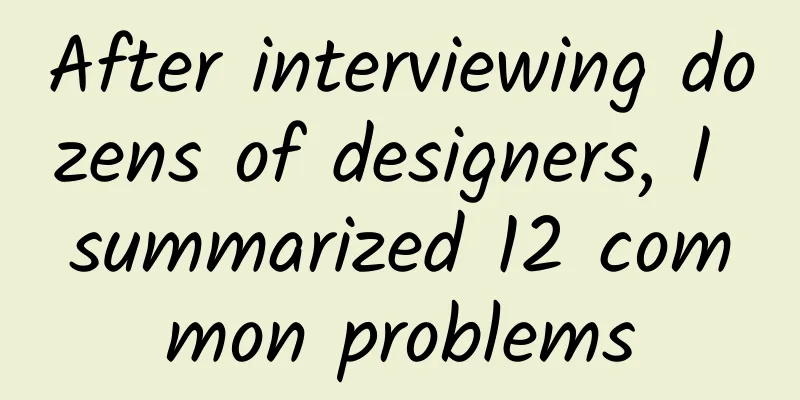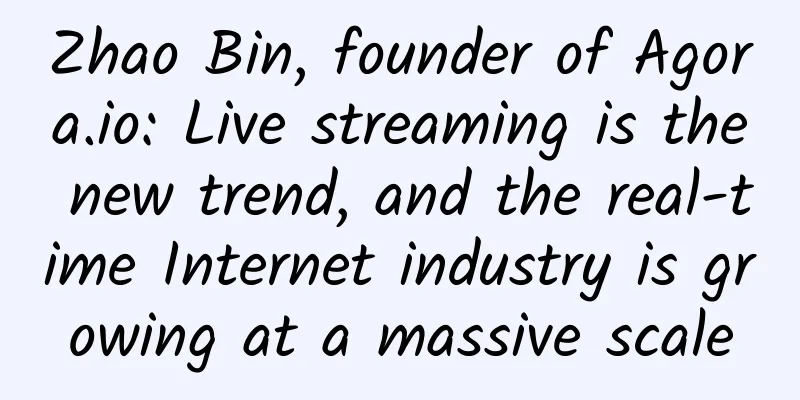Good products do not mean good sales. Sony TV has been losing money for ten years.

|
Whenever Sony is mentioned, its fans always associate it with black technology, as if Sony can create countless exciting technologies, and in fact it is close to this. In the field of consumer electronics such as audio and video, Sony has a very deep attainment. There is no need to list a single product, just mentioning Qualia, a former luxury consumer electronics brand under Sony, is very convincing. Qualia is a brand launched by Sony in 2003 and discontinued in 2005. During the two years, a total of 10 products were launched, covering TVs, projectors, speakers, headphones, cameras, Walkman, etc. The biggest feature of this brand is the pursuit of ultimate electrical performance regardless of cost and sales volume, supplemented by the most outstanding design. We can even imagine why Sony stopped producing the Qualia brand, because good products are not equal to good sales. This kind of product is crazy about burning money and can't please the market except consuming resources. In fact, in addition to Qualia, Sony's other products have encountered similar situations. Although they have top technology, it is difficult to convert it into high sales. Some people have commented that Sony's biggest failure is that it is too obsessed with technology and cannot commercialize this obsession. Japanese documentary writer Yasunori Tateishi even wrote a book called "Death from Technology: The Revelation of Sony's Decline" to explore this issue. Sony TV finally turns profitable after 10 years of losses Recently, Sony released its financial report for the fiscal year 2014, which showed that Sony achieved an operating profit of 68.5 billion yen and is expected to achieve an operating profit of 320 billion yen in fiscal year 2015. Specifically, the home entertainment and audio business department of television had sales of 1,207.3 billion yen in fiscal year 2014, an increase of 3.3% over the previous year, and an operating profit of 20.1 billion yen. Specifically for the television business, the operating profit was 30.4 billion yen, which was amortized to 7.9 billion yen, 4.9 billion yen, 9.3 billion yen and 8.3 billion yen in the four fiscal quarters. The last time Sony's TV business made a profit was in fiscal 2003. In the following ten years, Sony's TV business has been in the red, with accumulated losses approaching 800 billion yen. The reason for the losses can be summed up in four words - "slow transformation". Performanceism is the primary reason for this slow transformation. Due to a decade of continuous losses, Sony TV has been plagued by rumors of being sold. In addition, the independence of Sony's TV business in 2014 made people believe that Sony was preparing to sell its TV business. This profit can be said to be a timely relief, giving Sony the strongest reason to prove that TV does not need to be sold. The turnaround strategy was formulated three years ago After ten years of losses and many rumors of a sale, Sony's TV business's profit in fiscal 2014 is precious, but in fact such profit is not achieved overnight. Imamura Masashi has been in charge of Sony's TV business since 2011. As soon as he took over, he set a clear strategy: first, downsizing, second, transformation, and third, enhancing product appeal. Judging from Sony TV's historical financial reports, the company suffered a loss of 208 billion yen in fiscal 2011, a loss of 14.7 billion yen in fiscal 2012, and a loss of 5 billion yen in fiscal 2013, showing a trend of turning losses into profits year by year until it achieved profitability in fiscal 2014. 1. Lose weight In terms of slimming down, we can mainly see two points. One is to break away from the upstream panel business, take a light-asset route, and focus more on the TV itself. The second is to streamline the product line and make it simpler. Sony first sold 50% of its stake in S-LCD Panel Company, a joint venture with Samsung, to Samsung in 2011, and then withdrew from SDP Panel Company, a joint venture with Sharp, in 2012. The streamlining of product lines can be seen very intuitively from the new TV products in 2015. Sony TVs are divided into three lines: 4K, curved and HD. 4K is the top priority, which can be roughly divided into two series: the high-end X9000 series and the mainstream X8000 series. HD products are the focus of reduction. In 2015, Sony's new HD TV products only have four series: W850C, R580C, R550C and R500C, while Sony HD TV previously had six series. In fact, Masashi Imamura significantly reduced the product line in the first year of taking over Sony TV. Relevant data show that the number of Sony TV models in 2012 decreased by 40% compared with 2011. 2. Transformation The transformation is also reflected in two aspects: one is the architectural transformation, and the other is the product transformation. In 2011, Sony adjusted its TV business structure and divided it into three departments, responsible for Sony's own TVs, third-party products and next-generation products respectively. In 2014, Sony operated its TV business independently to enhance the flexibility of its TV business. Product transformation is more reflected in the flexibility of software. For example, in 2014, Sony TV supported Xiaomi Box, and the system opened interfaces to enable quick calling of Xiaomi Box on the main interface. In the same year, Sony and Google reached a cooperation and became the first partners of Android TV. In 2015, Sony's new TV products were the first to use Google's Android TV system specially designed for TV. Sony engineers proudly said that other companies' Android systems are designed for mobile phones and tablets, but our Android system is specially designed for TV. Such changes in product thinking were rare in the past. 3. Enhance product appeal For the "technological Sony", the appeal of its products has always been there. When talking about Sony products, Sony fans often express their love for them by saying "Sony is great", but the "paranoid" Sony thinks this is not enough. This is why Sony TVs promote the integration of sound and picture, attach importance to Triluminos display technology, and focus on 4K image processing chips. BRAVIA is the abbreviation of "Best Resolution Audio Visual Integrated Architecture", which means the highest quality audio and video integrated architecture. Sony once missed out on LCD technology because of its adherence to CRT TVs. After sensing the trend of 4K technology, it became particularly radical. Therefore, from the very beginning, Sony's 4K TVs have insisted on being based in the high-end, large-screen market, emphasizing sound, picture, and design, and last year, it added intelligence. According to reports, Sony's 2015 4K series TV models are all equipped with the 4K image processing chip X1. Driven by X1, the 4K X-Resolution PRO image processing engine has higher performance and can better exert the performance of the Elite Light Control Technology and Triluminos Technology. Even the entry-level X8300C series can use the 4K X-Resolution PRO image processing engine to make 4K images clearer and sharper. In Sony's view, although quantum dot technology is now used by everyone, only Sony can drive the panel to the maximum extent and bring its effect to the best. Why would they rather go through the trouble of renovating than sell it? Due to the continuous losses, the capital market has been predicting the decline of Sony TVs, and rumors of a sale have been rampant. Even though the products are well received by users, it seems to be of no avail. Many people are curious. It is reasonable for Sony to adjust its business for the sake of the overall situation. Since it can sell VAIO, why can't it sell BRAVIA? Masashi Imamura, senior vice president of Sony Group and president of Sony's new TV business, once said that Sony's long-standing commitment is to provide consumers with an emotional experience, but without the TV business, Sony would not be able to do this. In an interview with the Nikkei, Kazuo Hirai, president and CEO of Sony Corporation, also made it clear that the significance of television for Sony lies in two aspects: one is to maintain the relationship with users, and the other is the impact on other businesses and brands. Kazuo Hirai believes that, first, Sony does not operate white goods, and there are not many products of the "Sony" brand that can be used in households, only game consoles and televisions. Televisions occupy an important position in households and are also very important in building relationships with customers. Second, the image processing technology of television products also has an impact on other businesses such as smartphones. Although the premise is to make a profit, considering the impact on other businesses and the brand effect, Sony needs to continue its television business. At the end of last year, the Wall Street Journal quoted the opinion of Eiichi Katayama, head of the Japanese business research department of the famous financial institution Bank of America Merrill Lynch, saying, "If Sony's TV business department cannot provide a solid growth blueprint, then Sony should regard this department as a business that needs to be divested." Imamura Masashi also said that if the TV business does not make further efforts, the possibility of selling it off cannot be ruled out. This means that the TV business is not necessarily not allowed to be sold, but this is a later story. As long as it can achieve profitability through transformation, it is always a better solution than selling it off. It would be a tragedy if "Sony of Technology" died because of technology Recently, the NBA playoffs are in full swing. Due to the rules, the third-placed Clippers in the Western Conference and the sixth-placed Spurs in the Western Conference met in the first round. After a tense and fierce seventh game, the Spurs lost by 2 points. After the game, Paul hugged Duncan in tears and said that such a game was only a shame in the first round. The same is true for Sony. Among Japanese television companies, people often say "Sony of technology" and "Panasonic of sales". Sony's obsession with technology is the foundation of its business. Although Nobuyuki Idei and Howard Stringer once deviated from Akio Morita's technology-based entrepreneurial spirit when they served as CEOs, Sony's most profound impression still comes from its obsession with technology. It can learn and adjust, but if such a technology company is defeated by other companies that despise technology and focus more on marketing, it has to be said that it will be a tragedy and also a shame. As a winner of Toutiao's Qingyun Plan and Baijiahao's Bai+ Plan, the 2019 Baidu Digital Author of the Year, the Baijiahao's Most Popular Author in the Technology Field, the 2019 Sogou Technology and Culture Author, and the 2021 Baijiahao Quarterly Influential Creator, he has won many awards, including the 2013 Sohu Best Industry Media Person, the 2015 China New Media Entrepreneurship Competition Beijing Third Place, the 2015 Guangmang Experience Award, the 2015 China New Media Entrepreneurship Competition Finals Third Place, and the 2018 Baidu Dynamic Annual Powerful Celebrity. |
<<: After running scores, generating fever, and being awesome, what is Lei Jun’s fourth move?
>>: Alibaba's leadership change reveals Jack Ma's sense of crisis
Recommend
B station’s precise traffic layout method!
In the past two years, friends who have made shor...
KOL is too expensive, do you know more about KOC marketing?
There is not enough budget to continue looking fo...
Samsung admits S8 rear fingerprint sensor is bad, recommends users not to use it
Samsung officially released this year's flagsh...
Practical example of setting up a bidding OCPC account
Many friends have not tried ocpc yet. In fact, oc...
How to measure the height of a tiger? First make a curry-flavored ruler | Natural Trumpet
Welcome to the 42nd issue of the Nature Trumpet c...
Bilibili’s product logic and user operation strategy!
Today I will continue to talk to you about how Bi...
iOS developers should know: which data persistence solutions
Introduction The so-called persistence is to save...
How does Xiaomi demonstrate its innovativeness? Experience using the Xiaomi Mi Box
At the beginning of 2015, Xiaomi launched four ne...
How did Internet movies make a comeback?
For the 2014 summer movies, the film producers ar...
Are you famous for wearing a "class style"? Here are two bad habits that make you ugly and in a bad mood. I guess you are doing them!
Recently many people have complained online: I am...
Review of the private domain traffic case of maternal and infant community!
As a private domain operator, many people are cur...
The electric vehicle fast charging market is heating up, and high-power fast charging is becoming a trend
As the electric vehicle market continues to heat ...
Domestic companies fined for infringing BMW trademark rights
According to a recent report by Shanghai Daily, t...
Konka LED55 R2: YIUI 7.0 system is meticulously crafted to allow blockbuster movies to be presented synchronously in your living room
Many consumers think that choosing a TV is just a...









